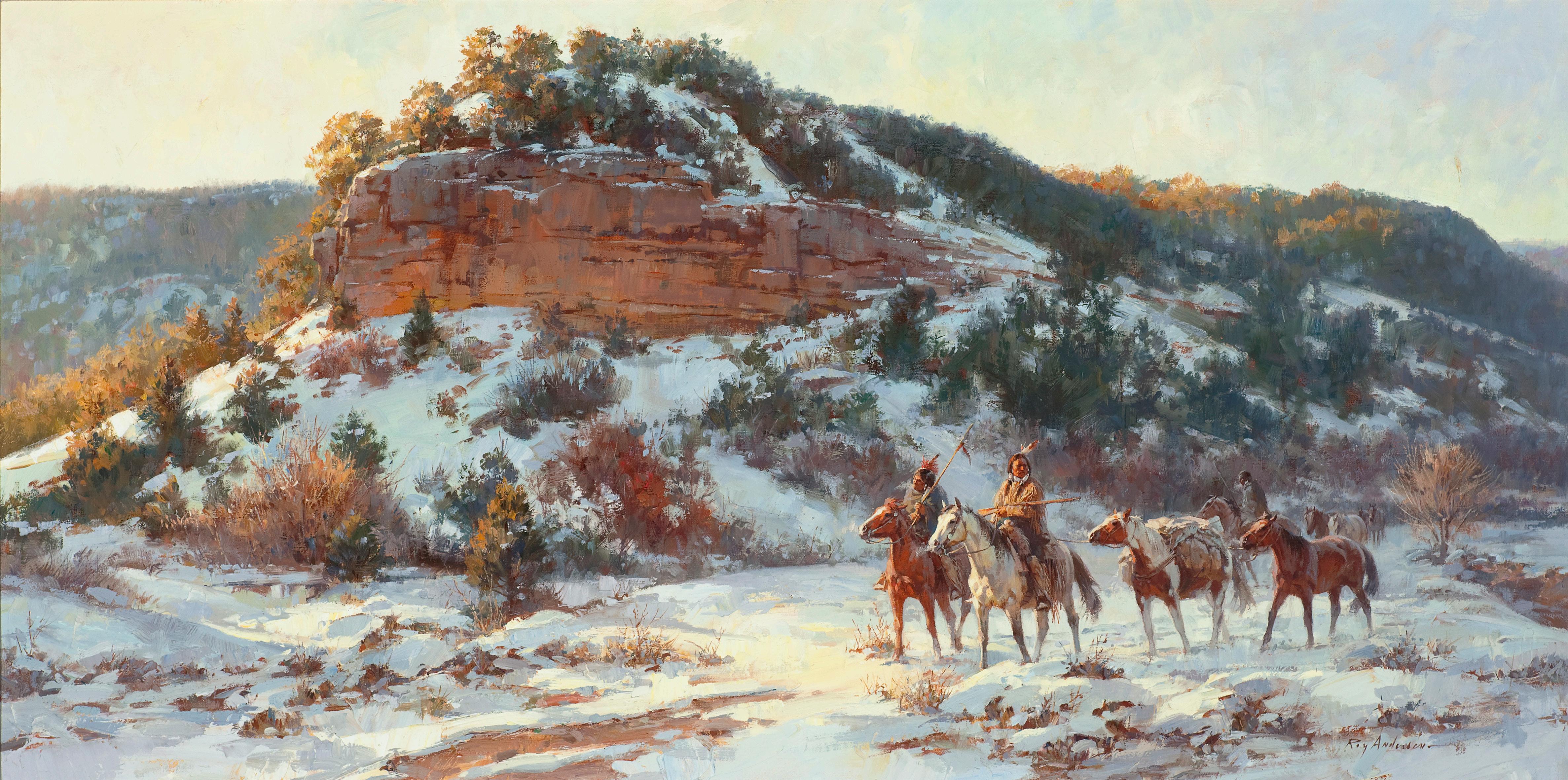
2 minute read
Roy Andersen
1930 - 2019
Though he was born in Chicago, Roy H. Andersen grew up on a farm in New Hampshire and credits an uncle, who was a cowboy from Nebraska, with influencing his interest in the West. Anderson returned to the city where he was born to pursue his formal education in art, studying at the Chicago Academy of Fine Art and spending many hours learning about Indian customs through the extensive ethnographic collections at the Field Museum of Natural History, and later continuing his formal art education at the Art Center School in Los Angeles.
Putting his art education and training to good use, Roy Andersen enjoyed a very successful career as one of the Nation’s top illustrators, working in a variety of capacities. In addition to working for magazines like National Geographic, Time, and Sports Illustrated, he illustrated a series of stamps featuring dogs and horses for the United States Postal Service, murals for the National Park Service and the Royal Saudi Naval Headquarters, and numerous paperback novels and movie posters. Perhaps most telling about Andersen’s work during this period is the fact that seven of his paintings are in the permanent collection of the National Portrait Gallery, including portraits of Albert Einstein and King Fahd.
After more than thirty years working as an illustrator, Andersen decided to move to Arizona and then later to Kerrville, Texas to pursue his interests in fine art related to the West, breeding registered American paint horses, and collecting Western paraphernalia and Indian artifacts.
Andersen’s paintings of the West focus primarily on Apache, Cheyenne, and Crow Indian cultures and incorporate a bold and distinct sense of composition and color. Said Anderson about his distinctive style, “perhaps I see colors that others don’t. I like to take chances with color because the creative process doesn’t happen without risk.” “I want to have my art say what I believe in a beautiful way.”
The motto Andersen said he lived by comes from English poet and playwright, Samuel Johnson: “Oh Lord, who has hitherto supported me, enable me to proceed in this present labor that in the last days, when I make a count of the talent committed to me, I may receive pardon.”
Considering the quality and breadth of Roy Andersen’s impressive body of work, it’s impossible to believe that he didn’t make full use of the talent committed to him.
THE SILENT TRAIL Oil on Canvas 24 x 48 inches
WHEN TRAILS VANISH Oil on Canvas 36 x 26 inches












